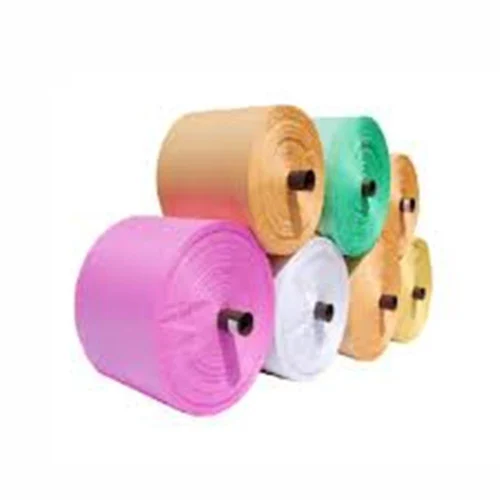The strength, resilience, and adaptability of woven fabric made of High-Density Polyethylene (HDPE) are well-known. HDPE woven fabric offers customization choices that enable individuals and businesses to adapt the material to specific requirements in a variety of industries, including as construction, agriculture, and packaging. An outline of the main customizability options is provided below:
1. Fabric Specifications
- Thickness and GSM (Grams per Square Meter): HDPE woven fabric can be customized to different thicknesses and weights depending on the intended application. Heavier GSM fabrics provide higher durability and strength, suitable for heavy-duty uses like industrial sacks and construction materials.
- Weave Density: The density of the weave can be adjusted to control breathability and moisture resistance, making it adaptable for packaging applications that require ventilation, such as agricultural sacks for grains and produce.
2. Coating and Lamination
- Laminated HDPE Fabric: For applications that require water resistance or airtightness, HDPE woven fabric can be coated or laminated with LDPE (Low-Density Polyethylene) or other materials. This is especially useful for tarpaulins, FIBC (Flexible Intermediate Bulk Containers), and moisture-proof packaging.
- UV Stabilization: Adding UV-stabilized coatings can protect the fabric from degradation due to prolonged sun exposure, making it suitable for outdoor applications like agricultural covers or construction sheeting.
3. Size and Shape Customization
- Custom Dimensions: HDPE woven fabric can be manufactured in custom sizes, including different lengths and widths to fit specific packaging, agricultural, or industrial needs. For example, custom-sized sacks, tarpaulins, and container liners can be produced to match unique requirements.
- Special Shapes: HDPE fabric can be cut and sewn into various shapes, including cylindrical, rectangular, or custom geometries to meet the needs of specific products or projects.
- HM Plastic Roll is manufactured using quality-assured raw material and modern and advanced technology which you can avail from here.
4. Printing and Branding
- Logo Printing: HDPE woven fabric can be printed with logos, company names, or other branding information using screen printing, flexographic, or rotogravure printing techniques. This is ideal for businesses looking to increase brand visibility on products like bags, sacks, and tarpaulins.
- Color Customization: The fabric can be dyed or produced in a wide range of colors to match branding guidelines or differentiate product lines. Customized colors help make packaging visually appealing and recognizable.
5. Functional Additives
- Anti-Slip Additives: HDPE fabric can be treated with anti-slip coatings, making it more stable and easier to stack when used in bags or sacks for packaging bulk materials.
- Anti-Static Additives: For packaging materials that are sensitive to static, HDPE woven fabric can be modified with anti-static treatments to prevent electrical charges from building up.
6. Additional Features
- Handles and Closures: Custom HDPE woven bags or sacks can include built-in handles, drawstrings, or zipper closures for ease of use and added functionality. This is especially common in consumer products like reusable grocery bags or sandbags.
- Reinforcements: For applications requiring extra durability, such as bulk handling, reinforcements can be added to stress points or edges of the fabric, increasing its load-bearing capacity and longevity.
7. Applications in Different Industries
- Agriculture: Custom HDPE woven fabric can be used for shade nets, weed control mats, and grain sacks. Ventilated fabric can be tailored for agricultural products that need airflow, such as fruits, vegetables, and seeds.
- Construction: HDPE fabric can be customized for use in scaffolding nets, ground covers, and temporary fencing. Coated fabrics provide extra weather resistance for construction applications.
- Packaging: The ability to customize HDPE woven fabric into FIBC bags, sacks, and container liners for transporting bulk materials like chemicals, food products, and fertilizers makes it highly versatile.
8. Eco-Friendly Customization
- Recyclable Options: HDPE woven fabric is already a recyclable material, but certain suppliers offer customization with recycled HDPE, reducing environmental impact. This is ideal for businesses seeking to enhance their sustainability efforts.
Conclusion
The customization options available with HDPE woven fabric make it an adaptable material for various industries. From custom sizes, colors, and branding to functional coatings and additives, businesses can tailor HDPE fabric to meet their specific needs. With options for durability, UV resistance, anti-slip coatings, and more, HDPE woven fabric continues to offer innovative solutions in packaging, agriculture, construction, and beyond. Read More…



